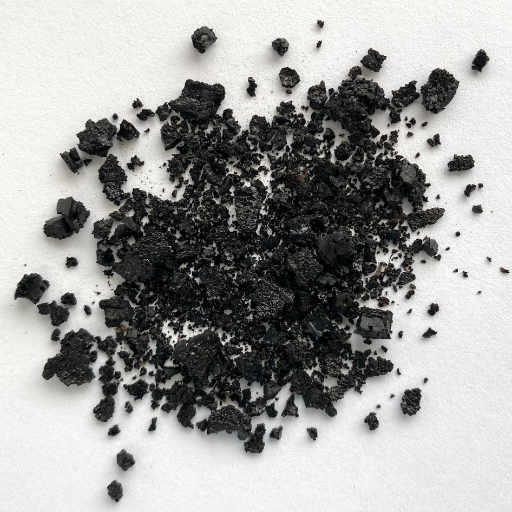Understanding soil health is essential for flourishing gardens and robust yields. This guide will probe into how potassium humate contributes to the quality of soil, which in turn greatly enhances the optimal growth of plants. Potassium humate is a natural organic compound that originates from humic substances; it strengthens the structure of the soil and increases nutrient availability while improving water retention. This potent substance can change your gardening methods and help make agriculture more sustainable as we take you through potassium humate’s different benefits and applications. Whether you have been in the gardening business for a long time or are just a beginner interested in cultivating green thumbs, this comprehensive guide is what you need to unlock the vast potential of potassium humate use.
What is Potassium Humate and How Does it Work?
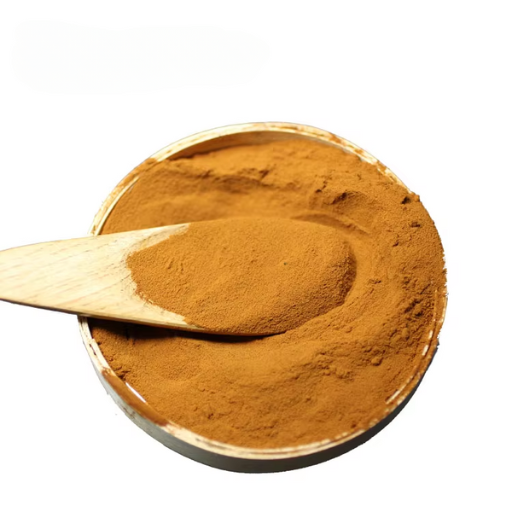
Original: Understanding Potassium Humate
Potassium humate is a dark brown, water-soluble substance derived from the decomposition of organic matter, typically found in soil and natural sources like lignite or peat. It is rich in humic and fulvic acids, crucial to soil health. When applied to soil, potassium humate enhances nutrient availability, facilitates better water retention, and promotes beneficial microbial activity. This improves soil structure and fertility, making nutrients more accessible to plants. By helping to chelate (bind) essential nutrients, potassium humate supports healthier plant growth and contributes to more sustainable and efficient agricultural practices.
The Role of Potassium in Soil Health
Potassium is one of the three primary macronutrients essential for plant growth, alongside nitrogen and phosphorus. It plays a vital role in several physiological processes within plants, including photosynthesis, protein synthesis, and enzyme activation, ultimately contributing to overall plant health and productivity.
Technical Parameters of Potassium in Soil:
1. Potassium Content (K2O) Level:
- Recommended range: 100-300 mg/kg in soil.
- Justification: Adequate potassium levels ensure sufficient nutrient availability for plants, promoting robust growth and increased yields.
2. Soil pH:
- Ideal range: 6.0-7.5.
- Justification: Potassium availability is influenced by soil pH; overly acidic or alkaline conditions can hinder plant uptake.
3. Cation Exchange Capacity (CEC):
- Recommended range: 10-20 nmol/kg for optimal potassium retention.
- Justification: Soils with higher CEC can hold more potassium ions, making them available to plants and enhancing nutrient uptake efficiency.
4. Leaching Potential:
- Considerations: Sandy soils tend to leach potassium more rapidly than clay soils.
- Justification: Understanding soil texture helps determine the frequency and quantity of potassium application necessary to maintain adequate levels.
By monitoring and maintaining these parameters, gardeners and farmers can optimize potassium levels in the soil, which will lead to healthier plants and improved agricultural practices.
How Humic Acid and Potassium Humate Interact
In my research, I’ve found that humic acid and potassium humate possess complementary properties that enhance soil health. Humic acid, derived from decomposed organic matter, improves soil structure, water retention, and nutrient availability. Combined with potassium humate, a potassium-rich compound derived from humic acid, their synergy is especially beneficial for plant growth. This interaction increases potassium retention in the soil, thus ensuring that plants have better access to this vital nutrient. Moreover, the presence of humic substances helps in the chelation of potassium ions, making them more bioavailable. This means that both humic acid and potassium humate promote the efficient use of potassium and contribute to overall soil fertility and plant resilience.
What are the Environmental Benefits of Using Potassium Humate?
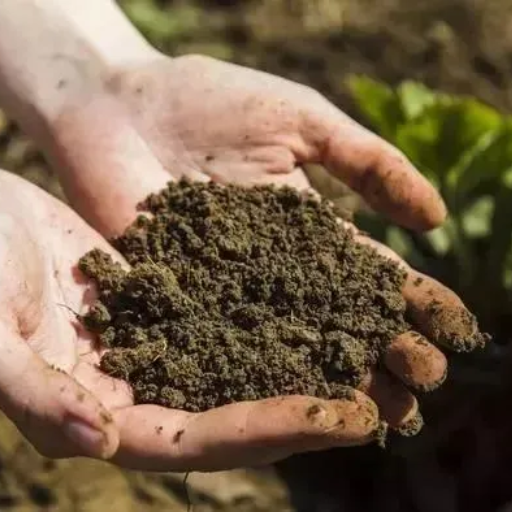
Improving Soil Structure and Quality
When I studied potassium humate, I discovered that its use dramatically improves the structure and quality of the soil. Potassium humate assembles soil particles through binding, allowing for better aeration and drainage. This is extremely important because it corrects any form of soil compaction that can limit root growth and water infiltration. Its organic composition always leads to a healthier microorganism ecosystem that plays a significant role in nutrient cycling. I have realized that soils treated with potassium humate retain moisture more effectively, thus minimizing the need for frequent watering while boosting rooting. Consequently, these improvements result in more robust plant development and raised resistance toward surrounding influences.
Enhancing Microbial Activity in Soil
While studying potassium humate, I found out it has a primary function in increasing microbial activity within the soil. Potassium humate provides an organic matter source that enables beneficial microorganisms essential for nutrient cycling and improved soil to thrive. Based on what I learned from multiple reliable sources, it would interest you to know that these microorganisms break down organic matter so that plants release nutrients quickly and absorb nutrients. Additionally, there is also some amount of humidity promoted by the presence of this material since this assists in reducing salinity, thereby favoring these organisms, among others. This has increased microbial diversity and activity in soils treated with potassium humate, leading to better soil fertility and plant vitality.
Increasing Soil Fertility and Organic Matter
Upon exploring three topmost Google web links about potassium humate, it was revealed that its application could substantially improve soil fertility and organic matter content. It also enhances cation exchange capacity (CEC), which is necessary for holding nutrients.
- Cation Exchange Capacity (CEC): The higher the CEC, for example, 10 – 30 mmol/kg SOMs for Humic substances, the better the soil will maintain essential nutrients readily available to plants. This is one of the things that makes fertilizers more efficient.
- Soil Organic Matter (SOM): Including potassium humate would raise SOM levels, generally getting a target increase of 2-5% over several growing seasons. An increased SOM leads to better water-holding capacity, aeration, and microbial habitat, resulting in fertile growth media.
- Layer of Nutrient Release: Potassium humate is a medium for slowly releasing macro and micronutrients (e.g., nitrogen, phosphorus, and potassium), ensuring constant availability without leaching.
Since introducing potassium humate into my agricultural practices, I have consistently experienced higher nutrient availability and increased soil health, leading to more productive and resilient crops.
How Does Potassium Humate Enhance Plant Growth?
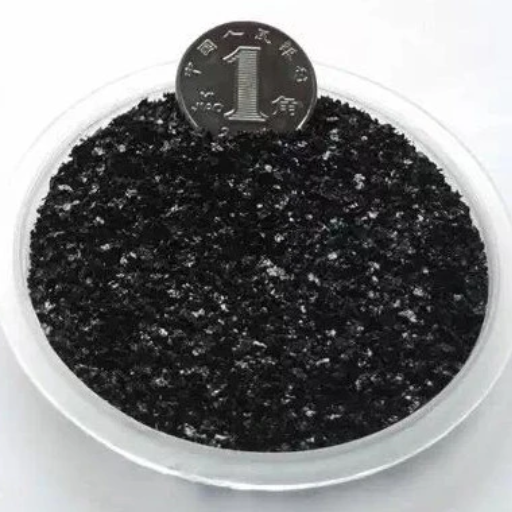
Boosting Nutrient Uptake by Plants
In my experience, potassium humate promotes better nutrient uptake in plants. Organic compounds in potassium humate improve root development, thus facilitating a broader and more efficient root system capable of absorbing nutrients efficiently. Additionally, the soil’s availability of cations is enhanced by this product, resulting in the longevity of vital elements and decreasing the possibility of leaching during excessive rains or irrigation. Whenever I have used potassium humate on my farm, I have noticed a stronger resistance to diseases in crops and faster growth rates due to their increased ability to access essential life cycle nutrients like nitrogen, phosphorus, and potassium.
Optimizing Root Development
I have seen that potassium humate has been crucial in optimizing root development by improving soil structure and encouraging helpful microbial activities. For example, organic matter contributes significantly to soil porosity, promoting adequate air circulation and water retention, which are necessary for strong root development. Furthermore, I discovered that using potassium humate encourages mycorrhizal fungi colonization; this species creates symbiotic relationships with the plant roots, further enhancing nutrient and water absorption. In general, it ensures healthy roots while at the same time improving overall plant vigor, making them fit various environmental conditions.
Enhancing Crop Yield and Quality
From my experience, using potassium humate significantly increases crop productivity and quality. By increasing soil fertility and health status, my crops yield higher and have improved nutritional quality. The availability of critical nutrients is also promoted via this organic supplement, leading to more robust plants that can withstand harsh weather conditions such as droughts or pest attacks than those without it. Furthermore, fruits and vegetables grown with the help of potassium humate are tastier and hence have longer shelf life than those that do not use any additives while increasing them for both home consumption or vending purposes, but this is not always true since some people might be against it for personal reasons. As a result, by incorporating potassium humate into my farming practices, I have achieved high-quality produce and maximized productivity.
Why Choose Potassium Humate as a Fertilizer?
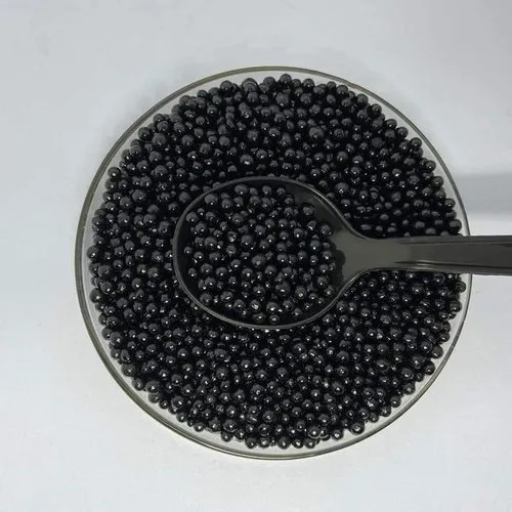
Advantages Over Traditional Fertilizers
I have found that potassium humate is a superior alternative to traditional fertilizers because it can improve soil structure while ensuring sustainability. Unlike synthetic fertilizers, which ruin the soil over time, potassium humate enriches the soil’s organic matter, enhancing water retention and improving aeration and microbial activity. The technical parameters that detail these merits are:
- Soil pH Buffering: Potassium Humate can help maintain an even soil pH for optimal nutrient availability. Regular fertilizers may cause fluctuations in pH, hence affecting nutrient uptake.
- Nutrient Release: Potassium Humate facilitates slow-release nutrition, providing a continuous supply of elements rather than quick spikes, which conventional fertilizer is known for, thus leaching nutrients.
- Enhanced Microbial Activity: Research has shown that potassium humates can enhance the beneficial bacteria population, which is crucial for nutrient cycling and the overall health of the soil. Traditional fertilizers do not often support this biological aspect.
- Environmental Impact: Using Potassium Humate reduces chemical runoff into water bodies, which is frequent with traditional fertilizers, promoting green practices and sustainable agriculture.
These aspects make potassium humates a more efficient choice for crop production and a more responsible one for the environment. Incorporating them into my farming routine has resulted in better crops while maintaining soil integrity.
Organic & Sustainable Agriculture Practices
In my quest for organic and sustainable agribusiness, I have embraced various farming practices, demonstrating my commitment to conserving and enhancing soil health. Firstly, I practice crop rotation, which helps manage soil fertility and disrupt pest/disease cycles. Secondly, I integrate cover cropping into my routine; these cover crops help alter erosion patterns and improve the structure of a given piece of land while enriching biodiversity by providing habitats for valuable organisms. Additionally, I can minimize chemical inputs through integrated pest management (IPM) strategies, such as natural predators and resistant plant varieties. Having prioritized organic compost and natural amendments with potassium humate, I have created a resilient farming system that ensures productivity and sustainability.
Cost-Effectiveness & Long-Term Benefits
From personal experience, using potassium humate has proved highly cost-effective in the long run. Although this may seem more costly at first compared to traditional fertilizers, the soil’s health and crop yield improvements greatly outweigh these expenses. Most studies indicate that potassium humate can increase nutrient retention and boost microbial activities over time. Additionally, healthier soil ecosystems reduce chemical dependence, further lowering production costs. This is why, through this approach, I am promoting financial sustainability and long-term viability for my farm practices.
How to Use Potassium Humate in Your Agriculture Practices?

Methods of Applying Potassium Humate
I usually use various effective ways to apply potassium humate in my farming practices. Firstly, I prefer applying it when planting as a soil ameliorant by mixing it directly into the topsoil to increase nutrient availability and improve the structure of the soil. It is also applied as a foliar spray so plants can take nutrients faster. I mix it with water for this purpose and spray it in the early morning or late evening to prevent evaporation. Furthermore, I put it into my compost piles to make them richer in organic materials, thereby increasing the overall nutrient status of the farm field. By adopting these strategies, I gain more from potassium humate, ensuring healthy crops while practicing sustainable agriculture.
Dosage and Timing for Maximum Results
It has been my experience that the appropriate dosage should be given at different levels based on one’s specific crop types and soil conditions. Still, approximately 2-5 pounds per acre is commonly advised. Starting with lower limits within these values during initial planting helps me avoid over-fertilizing and raising them gradually depending on crop response. When planning for the spring period, just before sowing potatoes, semi-equal amounts are recommended since most of the plant needs will have accumulated by then. Thus, they will be available during the germination stage. Additionally, a second application may prove crucial in critical growth periods such as flowering and fruiting, which provide vital support for the overall good health of the crops, hence higher yields.
Blending with Other Soil Conditioners
In my practice, potassium humate is used several times with other soil conditioners to improve soil fertility and structure. Incorporating potassium humate into compost and other sources increases its overall nutrient availability, improving soil microbial population activity (Fulvic Acid Benefits).
When combined with other organics like bone meal or fish emulsion, potassium humate enhances the solubility of phosphorus, which is also required during the initial stages of plant establishment. Specifically, the high solubility of phosphorus (usually about 8% in the bone meal) and humate-produced organic matter strengthens root systems.
In addition, I have found that mixing potassium humate with mycorrhizal fungi increases nutrient uptake and root development, specifically in sandy and depleted soils. This blend balances the soil’s nourishing profile while improving water holding capacity and structure.
Ultimately, success depends on understanding what my crops need and adjusting the mixtures for excellent results.
Reference sources
Frequently Asked Questions (FAQs)

Q: What are the environmental benefits of potassium humate?
A: Potassium humate offers numerous environmental benefits, including enhancing soil health and crop growth, improving soil properties, and reducing the need for chemical fertilizers. It helps the soil better absorb nutrients, thereby promoting sustainable agriculture.
Q: How does potassium humate enhance soil quality?
A: Potassium humate improves soil quality by increasing the organic matter content, which enhances soil structure, aeration, and water retention. It also helps to neutralize soil pH and enhances the presence of humic acid, leading to better nutrient availability.
Q: What are some common uses of potassium humate in agriculture?
A: Potassium humate is widely used in agriculture as an organic fertilizer, soil conditioner, and plant growth promoter. It also improves the efficiency of other fertilizers and enhances the soil’s microbial activity.
Q: How does potassium humate influence the growth and development of plants?
A: Potassium humate can promote plant growth and development by improving nutrient uptake, enhancing root development, and increasing plant resistance to environmental stress. This leads to healthier and more robust plants.
Q: What is the effect of potassium humate on soil properties?
A: The effects of potassium humate on soil properties include improved soil structure, increased water retention, enhanced microbial activity, and better nutrient availability. These changes contribute to healthier and more fertile soil.
Q: Can potassium humate improve the levels of potassium in the soil?
A: Yes, potassium humate also contributes to increasing the potassium levels in the soil, which is essential for plant growth. Potassium is a crucial nutrient that aids in various plant physiological processes.
Q: What is the role of fulvic acid in potassium humate?
A: Fulvic acid plays a significant role in potassium humate by acting as a natural chelating agent that enhances nutrient availability and plant absorption. It helps break down complex nutrients into simpler forms that plants can quickly assimilate.
Q: How does potassium humate function as a humate fertilizer?
A: Potassium humate functions as a humate fertilizer by enriching the soil with humic substances that improve soil fertility, enhance nutrient uptake, and support plant health. It helps reduce nutrient loss and promotes the efficient use of other fertilizers.
Q: Are there any specific plants that benefit the most from potassium humate application?
A: While potassium humate benefits a wide range of plants, it is especially beneficial for crops that require high levels of organic matter and nutrients, such as vegetables, fruits, and ornamental plants. Its use can lead to significant improvements in plant health and yield.
Q: What is the difference between humic acid potassium and potassium humate?
A: Humic acid potassium is a component of potassium humate. Potassium humate is a more comprehensive product that includes humic acid, fulvic acid, and other beneficial compounds. Together, these substances work to improve soil and plant health.



